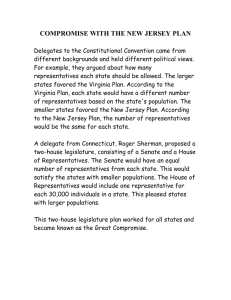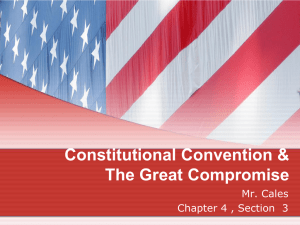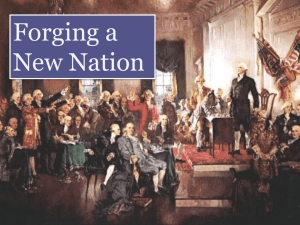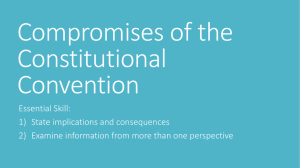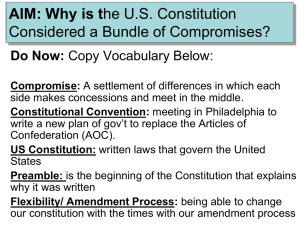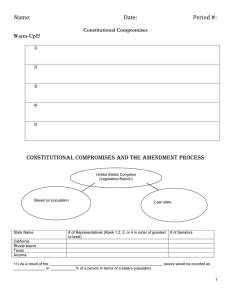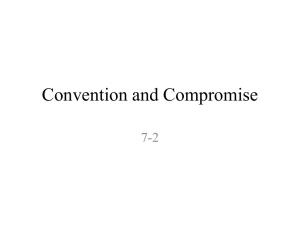Virginia Plan New Jersey Plan Great Compromise
advertisement
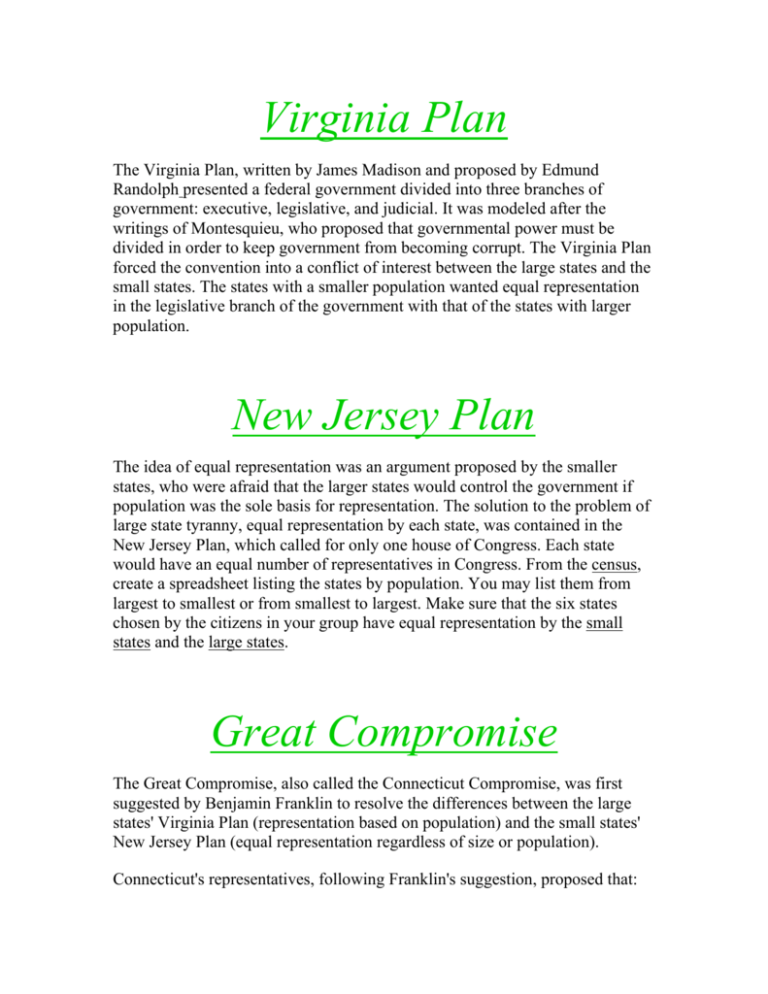
Virginia Plan The Virginia Plan, written by James Madison and proposed by Edmund Randolph presented a federal government divided into three branches of government: executive, legislative, and judicial. It was modeled after the writings of Montesquieu, who proposed that governmental power must be divided in order to keep government from becoming corrupt. The Virginia Plan forced the convention into a conflict of interest between the large states and the small states. The states with a smaller population wanted equal representation in the legislative branch of the government with that of the states with larger population. New Jersey Plan The idea of equal representation was an argument proposed by the smaller states, who were afraid that the larger states would control the government if population was the sole basis for representation. The solution to the problem of large state tyranny, equal representation by each state, was contained in the New Jersey Plan, which called for only one house of Congress. Each state would have an equal number of representatives in Congress. From the census, create a spreadsheet listing the states by population. You may list them from largest to smallest or from smallest to largest. Make sure that the six states chosen by the citizens in your group have equal representation by the small states and the large states. Great Compromise The Great Compromise, also called the Connecticut Compromise, was first suggested by Benjamin Franklin to resolve the differences between the large states' Virginia Plan (representation based on population) and the small states' New Jersey Plan (equal representation regardless of size or population). Connecticut's representatives, following Franklin's suggestion, proposed that: • • • Congress consist of two houses: Senate and House of Representatives House of Representatives be elected on the basis of population (proportional representation) and would have the power to initially propose all bills/laws for taxation and budget (any money collected or spent by the government) Senate would be elected on the basis of equal representation. In the original propsal the Senate could only accept or reject the bills propsed by the House of Representatives. Now the Senate can ammend or change a bill that is proposed by the House of Representatives. Further Analysis "As in most compromises, each side received a little and each gave up a little. The small states received equal representation in the Senate. The large states won control of the House of Representatives based on proportional representation. Also, the House was given important powers related to taxing and spending. The result was that the large states would have slightly more influence over the creation of laws on taxation and how money would ge spent. Bills passed by the House could always be checked, or rejected, by the Senate where the small states had equal representation. The compromise was hotly debated. It finally passed by one vote."(We the People, p. 52) 3/5 Compromise The conflict over slavery was complicated. Slavery had existed in some form throughout the history of the world for thousands of years. The colonial practice was established shortly after the early settlements were established. Although many of the Founding Fathers / Framers of the Constitution were personally opposed to slavery, all of the citizens attending the Constitutional Convention recognized that many of the agricultural plantations depended on slaves for the workers. The institution of slavery was universally accepted in the south and there were slaves working in most of the colonies. Delegates from three of the Southern States said that their state would refuse to be a part of the national government if it denied their citizens the right to buy, sell, and own slaves. Delegates from other states opposed slavery, but they wanted the Southern states to be a part of the United States. The southern states wanted to count the slaves as population for representation. The northern states didn’t want the slaves to count if they had no rights as citizens. They thought this would give the South an unfair advantage in votes taken in the House of Representatives. Finally the two sides reached a compromise. The slaves would count as 3/5 of a person for representation to the House of Representatives. Http://projects.edtech.sandi.net/roosevelt/constitutuion/virginiaplan.htm
